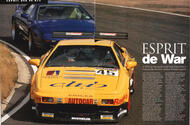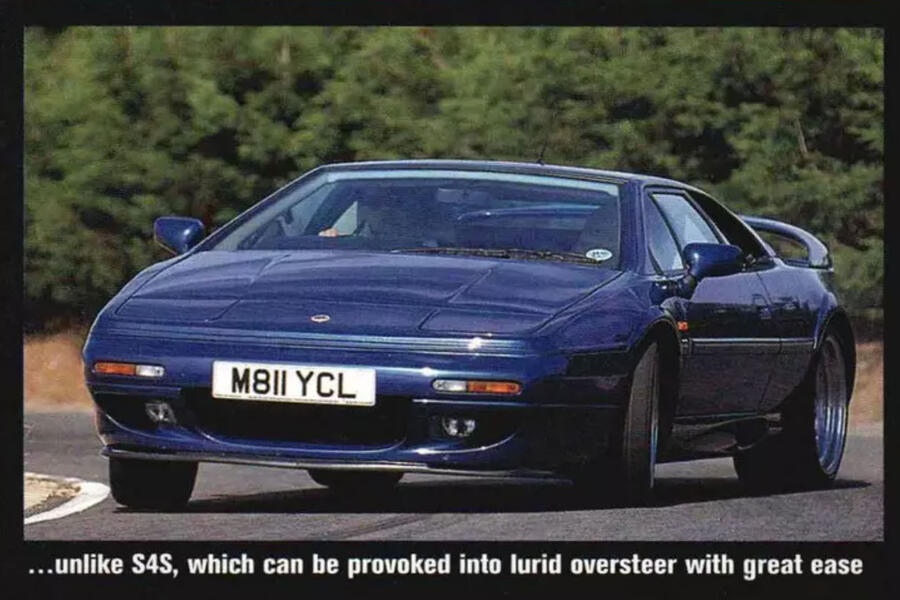Lotus Unveils New Supercar Inspired by Esprit: A Look Back at the Esprit GT2 Racer

Lotus has recently introduced the Theory 1, a groundbreaking three-seat concept car that draws inspiration from the iconic Esprit. In honor of the original Esprit, we have delved into the Autocar Archive to revisit one of its most remarkable moments: when Lotus challenged the top European competitors in the GT2 class and astounded them all.
Just before the Four Hours of Silverstone in August 1995, we had the incredible opportunity to test drive the Autocar-sponsored Esprit GT2 at Lotus’s test track in Hethel. Our goal was to uncover the performance differences between a road car and a racing thoroughbred, but the experience left a lasting impression that exceeded our expectations.
Esprit de War: A Thrilling Encounter

During my first drive in the Lotus Esprit GT2, I was forewarned that I would stall the car four times, which is apparently a common occurrence. However, I managed to stall it five times, and my subsequent getaway resembled the gracefulness of a newborn giraffe learning to walk. Nevertheless, I was behind the wheel of the Esprit GT2, the car that outperformed every other GT2 sports car in the BPR sportscar championship. It was so dominant that, even when it retired just eight minutes before the finish line, it had lapped every other car in its class.
As I gradually acclimated to the focused environment of a racing car, memories of my previous laps in the road-going counterpart, the Esprit S4S, flooded my mind. The S4S is a truly exceptional car that always surpasses expectations, whether it’s the sound of a Ferrari F512M, the gear changes of a Mazda MX-5, or the agility of a Caterham 7. The S4S effortlessly conquered the demanding track at Hethel, defying understeer and maintaining stability even through the challenging windsock corner. Its balance and forgiving nature were as impressive as its legendary grip.

Accompanying me on this exhilarating ride was George Howard-Chappell, manager of the Lotus GT Team and chief development driver for the Esprit GT2. He also served as an engineer for the Lotus Formula 1 team. Howard-Chappell pondered whether the handling balance of the road-going Esprit was too neutral for the average Lotus customer.
After my session, Howard-Chappell took the driver’s seat for some blisteringly fast laps. Our objective was to accurately measure the performance gap between a top-tier supercar and its all-out racing variant. Equipped with standard speed measuring equipment and a telemetry system acquired from the bankrupt Lotus Fl team, we meticulously recorded every aspect of the drive, from overall lap times to the slightest throttle inputs and brake applications.
Howard-Chappell set a benchmark time of 1:29.57sec in the S4S while I prepared to experience the GT2. Unlike silhouette racers like McLarens, Honda NSXs, Porsche 911s, and Ferrari F40s, the Esprit GT2 retained its distinctive Esprit engine and suspension, albeit with significant modifications.
The engine, a 2174cc unit that debuted in the Lotus 64 in 1968 and powered every subsequent Lotus model, produced 285bhp in the road-going S4S. In race trim, using standard pistons, rods, and valves, the GT2 generated 375bhp, and over 400bhp in qualifying with minor tuning adjustments. The engine featured a combination of components, including one camshaft from a Sunbeam Lotus rally car and a single large turbo. Lotus was one of the few teams unaffected by the restrictor size regulations. Although the engine could legally produce at least 450bhp, Lotus deemed it unnecessary as the GT2 was already the fastest GT2 car on the track.
To read the full article and explore the Autocar Archive, subscribe today.

